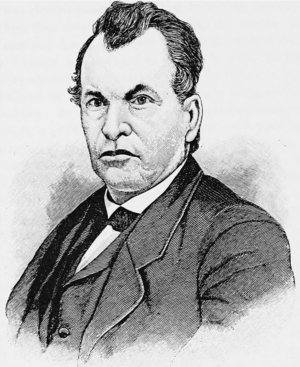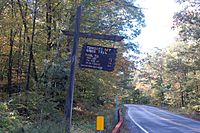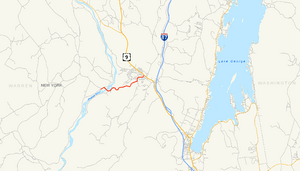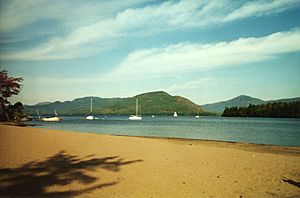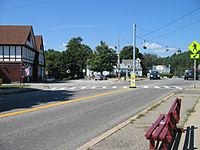Warren County, New York facts for kids
Quick facts for kids
Warren County
|
|||
|---|---|---|---|
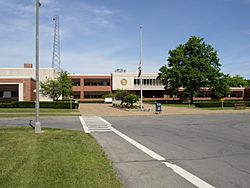
Warren County Municipal Center
|
|||
|
|||
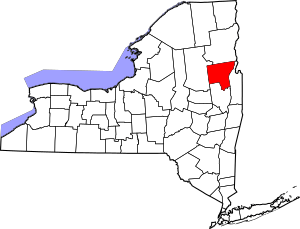
Location within the U.S. state of New York
|
|||
 New York's location within the U.S. |
|||
| Country | |||
| State | |||
| Established | 1813 | ||
| Named for | Joseph Warren | ||
| Seat | Queensbury | ||
| Largest city | Glens Falls | ||
| Area | |||
| • Total | 932 sq mi (2,410 km2) | ||
| • Land | 867 sq mi (2,250 km2) | ||
| • Water | 65 sq mi (170 km2) 6.9% | ||
| Population
(2020)
|
|||
| • Total | 65,737 | ||
| • Density | 75.8/sq mi (29.3/km2) | ||
| Time zone | UTC−5 (Eastern) | ||
| • Summer (DST) | UTC−4 (EDT) | ||
| Congressional district | 21st | ||
Warren County is a county in the state of New York. A county is like a large district with its own government. In 2020, about 65,737 people lived here. The main town where the county government is located is Queensbury.
Warren County was created in 1813. It is named after General Joseph Warren. He was a hero in the American Revolutionary War, especially known for the Battle of Bunker Hill. The county is part of the Capital District area of New York.
Contents
History of Warren County
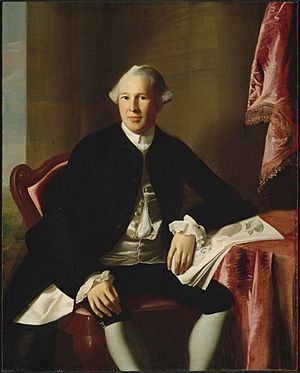
When New York first created counties in 1683, Warren County was part of a huge area called Albany County. This original county covered much of northern New York and even parts of what is now Vermont.
Over time, Albany County became smaller. In 1772, it was split into three parts. One new part was called Charlotte County. In 1778, Charlotte County changed its name to Washington County. This was to honor George Washington, who led the American Revolutionary War. He later became the first President of the United States.
In 1813, Warren County was officially separated from Washington County. It was named after General Joseph Warren. The first county officials met in a coffee house in a small town called Caldwell. Today, this town is known as Lake George Village.
The courthouse in Lake George Village was used until 1963. Then, the county government moved its main offices. They are now located a few miles south in Queensbury. This new place is called the Warren County Municipal Center.
Geography and Nature
Warren County covers a total area of 932 square miles. About 867 square miles of this is land, and 65 square miles (6.9%) is water.
The county is in the eastern part of New York State. It is located within the beautiful Adirondack Mountains. To the east, Warren County borders Washington County. The tallest point in the county is Gore Mountain. It stands 3,198 feet (975 meters) high.
Neighboring Counties
Warren County shares borders with these other counties:
- Essex County - to the north
- Washington County - to the east
- Saratoga County - to the south
- Hamilton County - to the west
Weather and Climate
Warren County has a humid continental climate. This means it has warm, humid summers and cold, snowy winters.
- In winter, cold, dry air often comes from Canada.
- In summer, warm, moist air can arrive from the Gulf Stream.
- Big storms, like "Nor'easters," can bring heavy snow or rain in winter.
- Fall and spring are usually mild and pleasant. The fall leaves are very colorful.
- Thunderstorms can happen in summer and fall.
| Monthly Normal High and Low Temperatures For Lake George, New York on the top and average monthly precipitation in inches on the lower section. | ||||||||||||
| City | Jan | Feb | Mar | Apr | May | Jun | Jul | Aug | Sep | Oct | Nov | Dec |
|---|---|---|---|---|---|---|---|---|---|---|---|---|
| Lake George | 31/10 | 35/12 | 45/22 | 59/33 | 71/45 | 79/53 | 83/58 | 81/56 | 73/48 | 61/37 | 47/29 | 35/17 |
| City | Jan | Feb | Mar | Apr | May | Jun | Jul | Aug | Sep | Oct | Nov | Dec |
| Lake George | 3.50" | 2.58" | 3.70" | 3.73" | 4.42" | 4.17" | 4.20" | 4.28" | 4.07" | 3.61" | 4.05" | 3.46" |
| Source:Weather Channel | ||||||||||||
People of Warren County
| Historical population | |||
|---|---|---|---|
| Census | Pop. | %± | |
| 1820 | 9,453 | — | |
| 1830 | 11,796 | 24.8% | |
| 1840 | 13,422 | 13.8% | |
| 1850 | 17,199 | 28.1% | |
| 1860 | 21,434 | 24.6% | |
| 1870 | 22,592 | 5.4% | |
| 1880 | 25,179 | 11.5% | |
| 1890 | 27,866 | 10.7% | |
| 1900 | 29,943 | 7.5% | |
| 1910 | 32,223 | 7.6% | |
| 1920 | 31,673 | −1.7% | |
| 1930 | 34,174 | 7.9% | |
| 1940 | 36,035 | 5.4% | |
| 1950 | 39,205 | 8.8% | |
| 1960 | 44,002 | 12.2% | |
| 1970 | 49,402 | 12.3% | |
| 1980 | 54,854 | 11.0% | |
| 1990 | 59,209 | 7.9% | |
| 2000 | 63,303 | 6.9% | |
| 2010 | 65,707 | 3.8% | |
| 2020 | 65,737 | 0.0% | |
| U.S. Decennial Census 1790–1960 1900–1990 1990–2000 2010–2020 |
|||
In 2000, there were 63,303 people living in Warren County. Most people (97.48%) were White. About 1.05% of the population was Hispanic or Latino. Many people had Irish, English, Italian, French, or German backgrounds. Most people spoke English.
About 30.70% of households had children under 18 living with them. The average age in the county was 39 years old.
2020 Census Information
| Race | Num. | Perc. |
|---|---|---|
| White (NH) | 59,299 | 90.2% |
| Black or African American (NH) | 736 | 1.12% |
| Native American (NH) | 139 | 0.21% |
| Asian (NH) | 729 | 1.11% |
| Pacific Islander (NH) | 0 | 0% |
| Other/Mixed (NH) | 3,082 | 4.7% |
| Hispanic or Latino | 1,752 | 2.7% |
Economy and Jobs
Warren County has a strong economy. Many businesses thrive here. The total yearly retail sales in the county are over $1 billion.
The county is a major center for making medical devices in New York State. Many new medical inventions have come from this area. Companies like AngioDynamics Inc. in Queensbury make devices for treating blood vessel diseases. Boston Scientific Corp. in Glens Falls is another big medical device maker.
Education for Students
Warren County has many schools for young people.
- There are 16 public elementary schools. Queensbury Elementary is the largest.
- There are nine middle schools. Queensbury Middle School is the largest.
- There are 11 high schools. Queensbury Senior High School is the largest.
- There is also a private Catholic school in Glens Falls.
For education after high school, SUNY Adirondack is located in Queensbury. It offers many different degrees and programs. SUNY Plattsburgh also offers college programs at the SUNY Adirondack campus.
Healthcare Services
The main healthcare center in Warren County is the Glens Falls Hospital. It is located in Glens Falls. This hospital has 410 beds and provides many medical procedures.
Getting Around Warren County
There are several ways to travel in Warren County.
Bus and Trolley Services
Regular bus service is available from Queensbury to Glens Falls. These services are provided by the CDTA. There are also trolleys that run on the road. These trolleys go from Bolton Landing.
Roads and Highways
Warren County has many state and county roads. These roads cover a total of 464.7 miles (747.9 km).
- U.S. Route 9 runs through the eastern part of the county.
- Interstate 87, also known as the Adirondack Northway, is the main highway.
Roads Near Lake George Village
- New York State Route 9N goes through the Lake Luzerne area.
- In Glens Falls, New York State Route 9L and New York State Route 32 are important routes.
- New York State Route 149 is a 32-mile (51 km) road that connects Warren and Washington counties.
- New York State Route 254 is a 6-mile (10 km) road in the southern part of the county.
Roads in Lake George Village
- New York State Route 9N runs north to south through Lake George.
- County Routes 6 and 59 are also important. County Route 59 connects to New York State Route 9L and goes to Queensbury.
- New York State Route 912Q is a connector road to Exit 22 on the Northway.
Roads North of Lake George Village
- In Bolton and Bolton Landing, New York State Route 9N is the main road.
- County Route 11 connects to Exit 24 on the Northway.
- In Diamond Point, New York State Route 9N and County Route 35 are key roads. County Route 35 connects to the Northway (Exit 23) and U.S. Route 9.
- New York State Route 8 enters the county near Johnsburg. It joins U.S. Route 9 for a short distance.
- In Warrensburg, New York State Route 28 and New York State Route 418 meet U.S. Route 9. County Route 10 also runs through Warrensburg.
Trains for Travel
The Fort Edward Amtrak train station is about 6 miles (10 km) southeast of Glens Falls. You can take Amtrak trains like the Adirondack and Ethan Allen Express from here. These trains can take you to places like Montréal, Albany, New York City, and Rutland, Vermont.
The Whitehall Amtrak station is about 23 miles (37 km) northeast of Glens Falls. It is also served by the Adirondack route.
Airport for Flights
Floyd Bennett Memorial Airport (FAA: GFL) is a public airport owned by the county. It is located about 3 nautical miles (6 km) northeast of Glens Falls, in the Town of Queensbury.
Arts and Culture in Warren County
Warren County has many places for music and art.
- The Luzerne Music Center is a summer camp that teaches music. It also holds a Chamber Music Festival in July that the public can enjoy.
- The Upper Hudson Musical Arts brings professional concerts to the Adirondacks all year. These concerts are held at the Tannery Pond Community Center.
- The Charles R. Wood Theater in Glens Falls is a professional theater that hosts the Adirondack Theatre Festival.
The Golden Heart Farm art colony was a summer home for artists in Bolton Landing. It opened in 1921. Important artists like David Smith and Dorothy Dehner came here to study and create art. A special New York State historic marker was placed in Glens Falls in 2013 to honor artist Wilhelmina Weber Furlong.
Fun Places to Visit
Lake George Activities
Warren County is a very popular place for tourists because of Lake George. This large lake covers 28,160 acres (114 km2).
- Popular activities on the lake include river tubing, swimming, kayaking, and boating.
- Prospect Mountain offers great views just outside town.
- Steel Pier has tour boats that take visitors around the lake.
- Lake George Village is a lively tourist spot with many stores.
- The Lake George Battleground is a historic site near the village.
There are many hotels and motels for visitors. You can also find several campgrounds, like Hearthstone Point and Lake George Battleground. Some campgrounds are even on islands in the lake, like Long Island. The New York Department of Environmental Conservation manages all these campgrounds.
Historic Sites to Explore
Warren County has many interesting historic places.
- The Fredella, Joseph J., House and Garage was built in 1900. It is known for its beautiful architecture.
- The Wreck of the 1758 radeau LAND TORTOISE is a shipwreck site from 1758.
Other historic places include:
- Chapman Historical Museum
- Marcella Sembrich Opera Museum
- The Hyde Collection (Glens Falls)
- Warrensburg Mills Historic District
- Wiawaka Holiday House
Towns and Communities
Larger Towns and Areas
| # | Location | Population | Type | Area |
|---|---|---|---|---|
| 1 | †Glens Falls | 14,830 | City | Greater Glens Falls |
| 2 | Glens Falls North | 9,530 | CDP | Greater Glens Falls |
| 3 | West Glens Falls | 9,473 | CDP | Greater Glens Falls |
| 4 | Warrensburg | 3,045 | CDP | Adirondack Park |
| 5 | Lake Luzerne | 1,336 | CDP | South |
| 6 | Lake George | 1008 | Village | Adirondack Park |
| 7 | Chestertown | 586 | CDP | Adirondack Park |
| 8 | Pottersville | 359 | CDP | Adirondack Park |
| - | Bolton Landing | 518 | CDP | Adirondack Park |
| - | North Creek | 562 | CDP | Adirondack Park |
Towns in Warren County
- Bolton
- Chester
- Hague
- Horicon
- Johnsburg
- Lake George
- Lake Luzerne
- Queensbury (county seat)
- Stony Creek
- Thurman
- Warrensburg
Smaller Communities (Hamlets)
- Brant Lake
- East Lake George
- Kattskill Bay
- North River
- Oneida Corners
- Riparius
- Silver Bay
- Wevertown
- Pottersville
See also
 In Spanish: Condado de Warren (Nueva York) para niños
In Spanish: Condado de Warren (Nueva York) para niños




